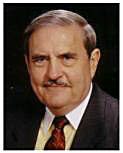Think About It
Congress made two previous attempts at a central banking system decades before it created the Federal Reserve Bank. A central bank is considered a “lender of last resort”, literally meaning it can “create” money to lend. Alexander Hamilton, a Federalist, advocated the first central bank. Thomas Jefferson and Patrick Henry asserted it was unconstitutional (Congress had been given no such authority). President Washington finally acceded to Hamilton and, in 1791, The Bank of the United States opened in Philadelphia. It was a PRIVATE bank, owned mostly by British and other foreign interests, with a 20 year charter. By 1793, Hamilton and the bank were accused of corruption and mismanagement. In 1811, Congress failed to renew the charter and the bank was dissolved.
In 1815, President James Madison vetoed a bill to create the Second National Bank on the grounds it was unconstitutional. By 1816, someone had convinced him otherwise, probably because of debts relating to the War of 1812. On January 1, 1817, the Second National Bank opened for business in Philadelphia, with a 20 year charter. Again, it was owned by PRIVATE interests. When it applied in 1832 for an early extension, Andrew Jackson vetoed it as being unconstitutional. In 1835, with the bank powerless, Jackson paid off the Federal debt for the ONLY time in history. He moved U. S. money into State banks. The Second National Bank tried to continue operating, but closed within a few years. In 1840 President Van Buren approved the Treasury Act establishing an independent Treasury, allowing the government to control its own money. In 1841 Congress repealed the independent Treasury Act, and left the nation again without a banking system. The Treasury once more deposited government money into State banks. Twice in 1841, Congress passed two separate Federal Bank Acts, but President Tyler vetoed them as unconstitutional.
In 1862, because of the Civil War, the U. S. government issued paper money with no gold backing it. By 1873, a flood of unredeemable paper money had thrust the nation into a long depression. In 1875, Congress passed the Specie Resumption Act, again allowing legal tender to be exchanged for gold, and the nation started to revive from depression. In 1907, another major financial panic came, and financier J. P. Morgan arranged loans of around $100 million in gold to various New York banks to avert their insolvency because of bank runs.
It was with this background in 1910 that U. S. Senator Nelson Aldrich, Chairman of the National Monetary Commission (and father-in-law of John D. Rockefeller, Jr.); with A. P. Andrews, Assistant Secretary of the Treasury, and a small group of the nation’s most prominent bankers went secretively to the Jekyll Island Club, then a private millionaire’s retreat off the Georgia coast; to plan a new central banking system for this country. Aldrich had spent the better part of 2 years in Europe studying their system, which included the Bank of England, a PRIVATELY owned central bank. Paul Warburg, a naturalized German representing the prominent Baron Rothschild of European banking fame, was also present.
The plans they devised would eventually become a prominent part of the 1912 Presidential campaign, which elected Woodrow Wilson. Republican William Howard Taft was known to be against central banking, and when former Republican President Teddy Roosevelt was encouraged to run on a third party Progressive (Bullmoose) ticket, it split the Republican vote and assured Wilson’s victory. Wilson signed the Federal Reserve Act on December 29, 1913, creating a central (yet de-centralized with 12 branches) bank owned by its PRIVATE member banks. It has through the years become more centralized again. And it has been reported that by as early as 1916, Wilson regretted the action and said he had unwittingly ruined his nation.
Friday, September 28, 2007
Subscribe to:
Post Comments (Atom)

No comments:
Post a Comment